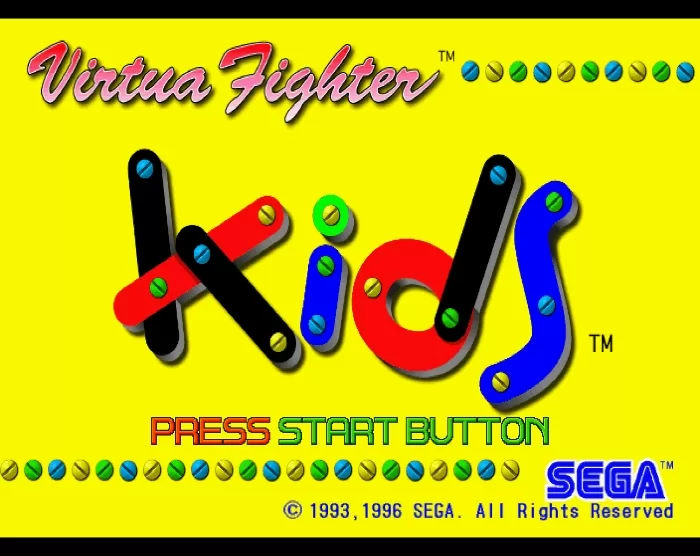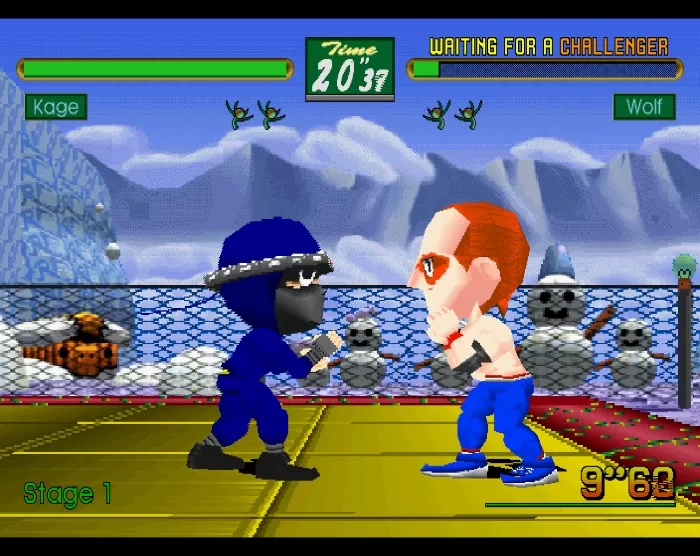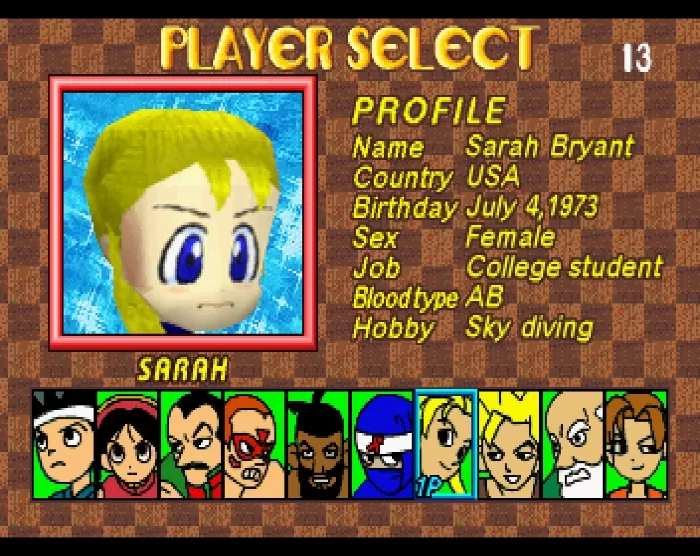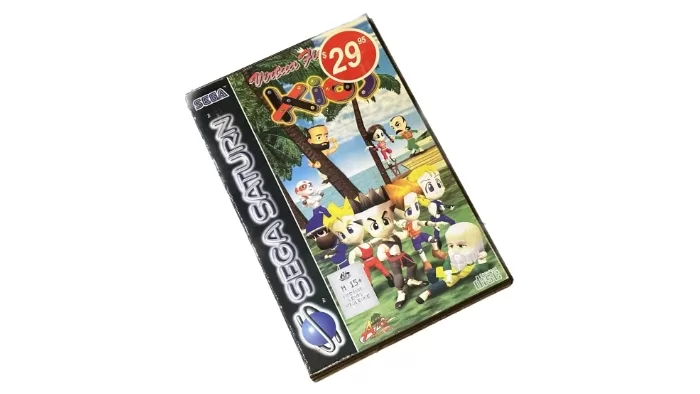
Virtua Fighter Kids is an oddity in the fighting game scene — I mean, how many games let you put children into brutal fistfights anyway?
In Retro Game Of The Week I pull a game from my collection and write about why it’s important or interesting. Or in some cases, badly dated and rubbish.
The 1990s were a fascinating time for the one-on-one fighting game scene, with so many contenders trying — and mostly failing — to unseat Capcom’s mighty Street Fighter II from its regal perch.
While some of them have fans to this day — hello, array of SNK fighting games, I’m looking at you — many of them were just weak imitations with little new to offer.
Then in 1993, we got Virtua Fighter, and SEGA introduced a whole new world of complex polygon fighting.
Sega had jousted at Capcom previously with titles like Eternal Champions, for example.
I’ll just pause here so you can appreciate this fine piece of advertising:
Spoiler: It did not in fact eat its competition. But I digress.
Virtua Fighter opened up new dimensions for fighting games and was a natural fit for Sega’s Saturn console as a launch title.
Virtua Fighter II was even better, and to this day I’m not sure how Sega managed to get such an impressive looking game running on the base Saturn hardware. It’s a masterpiece.
Virtua Fighter Kids… well, now, that’s a weird one.
The core concept remains the same; the cast of Virtua Fighter II must battle each other in arenas to knockout, ring out or a time limit, at which point whoever has the most health wins the round.
Lather, rinse, repeat, and mostly use the arcade mode as training for when you’re taking on your mates — or soon to be ex-mates, depending on how well they can take a beating.
It’s just that, like the name suggests, the entire cast are now kids.

The start screen is not anything you want to look at if you have a hangover.
I speak from experience.
They’re Chibi-fied, basically, and while the game does play around with quite how serious this is, given that more adult characteristics are present — beards and boobs and the like — it’s still a really odd little flex and an interesting side-story in the evolution of Virtua Fighter.

Kage, we talked about this. You must stop hitting the other children. No, I don’t care WHO started it…
For example, until I picked it for this week’s Retro Game of the Week, I didn’t know that there was an even more exclusive, odd promotional Japan-only version, “Virtua Fighter Kids: Java Tea Original Edition”.
The oddity of the characters possibly being youngsters aside — I’m not sure you could make that concept fly today, for better or worse — the other big change that Virtua Fighter Kids makes is in the speed of play. Virtua Fighter was already pretty nippy, but these youngsters really do ping around the place at a different pace.

They’re kids… but they’re fast and brutal kids that will knock you down very quickly if you let them.
What this means is that even though there are Virtua Fighter characters whose movesets I’m familiar with, it always takes me a few games to adjust to Virtua Fighters Kids slightly different pace.
I mentioned how Virtua Fighter II is a masterpiece, and one that I’d argue still stands up well today earlier. Virtua Fighter Kids is a tad more experimental, with a wider array of animation — because you can get away with a lot more when your character heads are the side of balloons — but also a lot more clipping and some slightly awkward move animation transitions along the way.

Sarah Bryant is now nearly 50. I feel so old now. Anyone else? Just me?
Is it an essential 1990s fighting game?
No, it’s not. There’s absolutely no way you should choose it first over Virtua Fighter II, for a start, and if you want Sega being really weird, then Fighters Megamix probably outdoes it.
Actually, make that definitely outdoes it.
Fighters Megamix lets you take the Virtua Fighters Kids version of Sarah Bryant and have her fight the car from Daytona. That’s… special.
How to play Virtua Fighters Kids today

Well, you get a playground full of children and you start some nasty rumours amongst the sixth graders that…
No, wait, don’t do that. At all.
My own copy is pictured above, but it didn’t cost me $29.95 at any time. I got it for $29.95 along with a couple of other games right at the point when Australian retailers were liquidating Saturn games en masse, so it actually cost me just under $10. Well worth it at that price.
Also, it’s M15+ rated, which I find genuinely hilarious. Yes, sure, they are hitting each other and all that, but there’s more violence in a Roadrunner cartoon by a wide stretch…
Surprisingly, outside its arcade incarnation (which I’ve never seen — let me know if you have below) and the Sega Saturn version, there’s no other ports of Virtua Fighters Kids. Weird, given just how much Sega loves to mine its old IP these days. Maybe if we ever get a Sega Saturn Mini one day?
Which means if you want an original copy, you’re going to have to drop it into an actual Sega Saturn. Online, copies go for around $30 or so for an English-language copy, maybe a little cheaper for Japanese copies.
That is unless you want that Java Tea Original version, which will cost you a little more — typically $30-$60 for completed sales.
Bear in mind that the Saturn is region-locked for games, though that’s pretty trivial to bypass these days if you know where to look.
